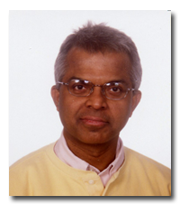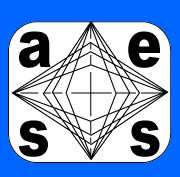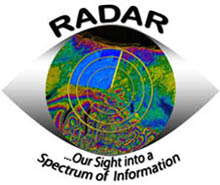|
|
|
Tutorial
3.7
Thursday PM, 27 April 2006
Space-Based
Radar (SBR)
Instructors: S. Unnikrishna
Pillai, Polytechnic University, USA
Braham Himed, AFRL/SNRT, USA
Synopsis:
The objective of this tutorial is to introduce the participants
to various aspects of space-based radar (SBR), including
moving target indication (MTI) and synthetic aperture radar
(SAR). This tutorial is tailored to fill the needs of engineers
and scientists seeking to enhance their understanding of
issues associated with SBR and their impact on system performance.
The topics covered in this four-hour tutorial include the
following:
-
SBR Kinematics:
Radar-Earth Geometry
-
SBR Footprint and
Range Foldover Phenomenon
-
Doppler Shift
-
Modeling Earth's
Rotation for SBR - Crab Angle and Doppler
-
SBR Clutter Data
Generation Fundamentals -Terrain Modeling
-
STAP Algorithms
for Target Detection using SBR Data
-
Performance Evaluation
of STAP Algorithms - MDV, Output SINR
-
Performance Limits
- Cramer-Rao Bounds
-
Performance Improvement:
Waveform Diversity Methods
-
SAR using SBR
Several examples
would be worked out in this tutorial.
 |
Prof.
S. Unnikrishna Pillai received his PhD degree
in systems engineering from the Moore School of Electrical
Engineering, University of Pennsylvania, Philadelphia
in 1985 and M.Tech in electrical engineering from IIT,
Kanpur, India in 1982. He joined Polytechnic University,
Brooklyn, New York as an Assistant Professor in 1985
where he is currently a Professor of Electrical and
Computer Engineering, He is the author of three textbooks
Array Signal Processing (Springer-Verlag, 1989),
Spectrum Estimation and System Identification
(Springer-Verlag, 1993, co-authored with Theodore I.
Shim) and co-author with Professor Athanasios Papoulis'
fourth edition of Probability, Random Variables and
Stochastic Processes (McGraw Hill, 2001). His present
research activities include radar signal processing,
blind identification, spectrum estimation, system identification,
waveform diversity and space based radar signal processing. |
 |
Dr.
Braham Himed received his B.S. degree in
electrical engineering from Ecole Nationale Polytechnique
of Algiers, Algeria in 1984, and his M.S. and Ph.D.
degrees both in electrical engineering, from Syracuse
University, Syracuse, NY, in 1987 and 1990, respectively.
From 1990 to 1991 he was an Assistant Professor in the
Electrical Engineering Department at Syracuse University.
In 1991 he joined Adaptive Technology, Inc., Syracuse,
NY, where he was responsible for radar systems analyses
and the analysis and design of antenna measurement systems.
In 1994 he joined Research Associates for Defense Conversion,
Marcy, NY, where he was responsible for radar systems
design and analysis and radar signal processing. Since
March 1999, he is with the U.S. Air Force Research Laboratory,
Sensors Directorate, Rome, NY, where he is involved
with various aspects of radar processing. His research
interests include detection, estimation, multichannel
adaptive signal processing, time series analyses, array
processing, space-time adaptive processing, hot clutter
mitigation, and ground penetrating radar technology.
Dr. Himed is the recipient of the 2001 IEEE region I
award for his work on bistatic radar systems,
algorithm development and phenomenology. Since 1993,
he has also been an Adjunct Professor at Syracuse University.
Dr. Himed is a senior member of the IEEE and a member
of the Radar Systems Panel.
|
|
|




